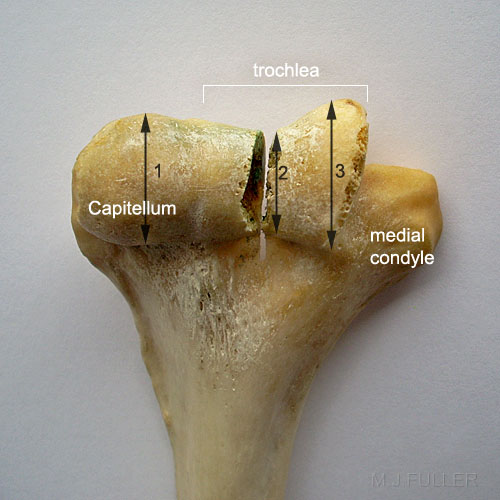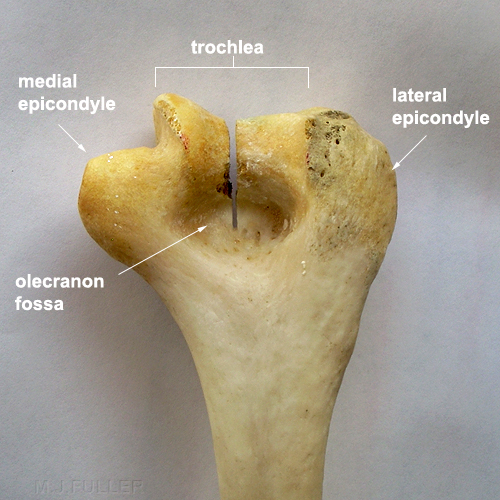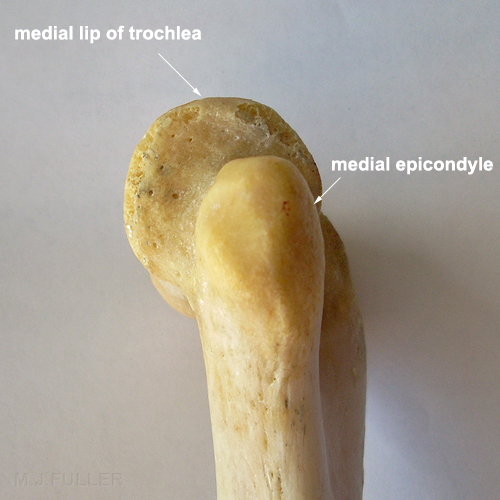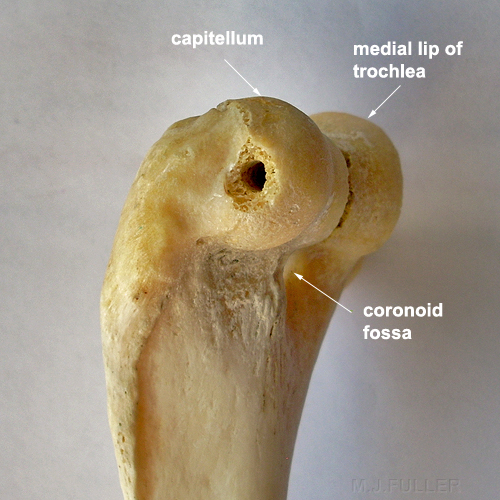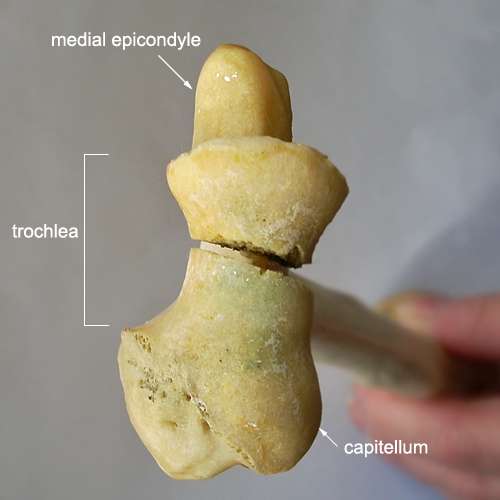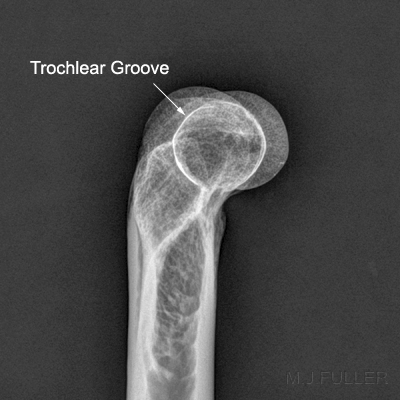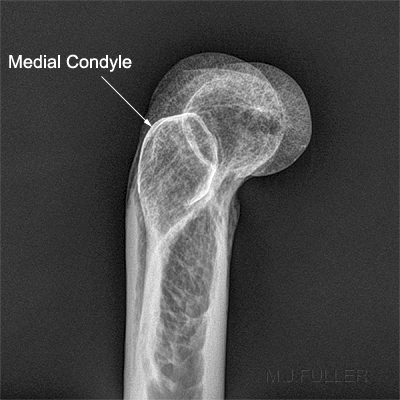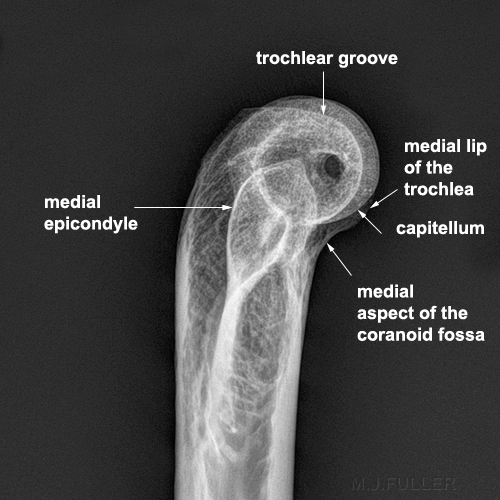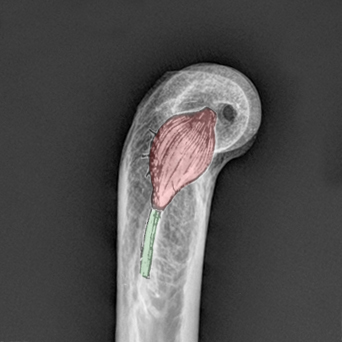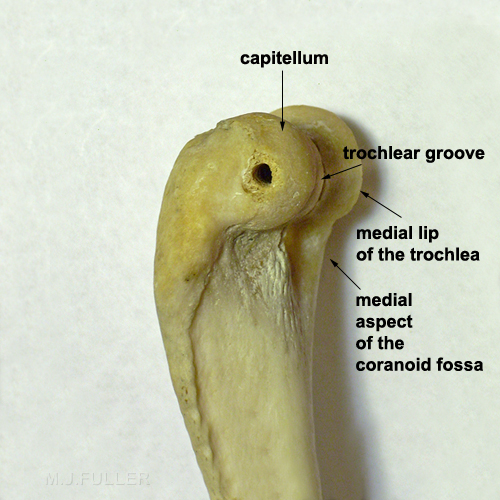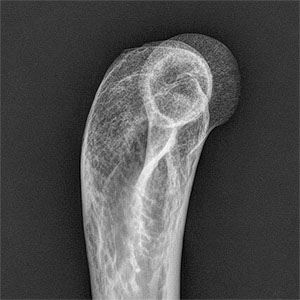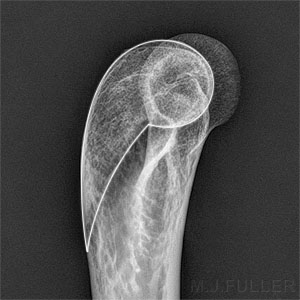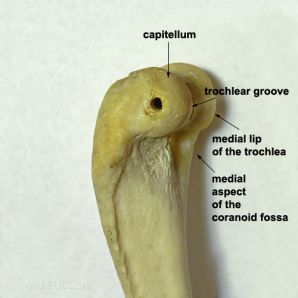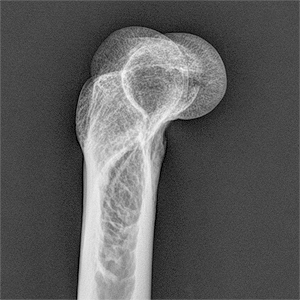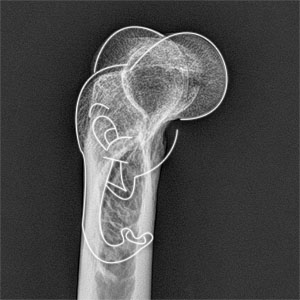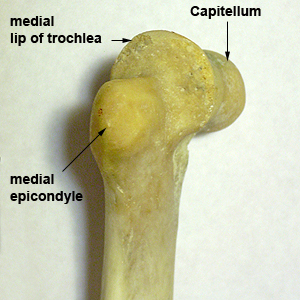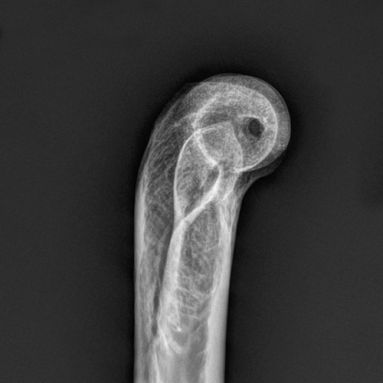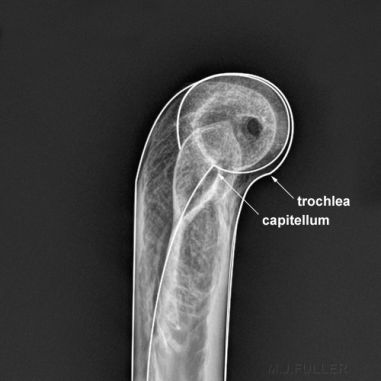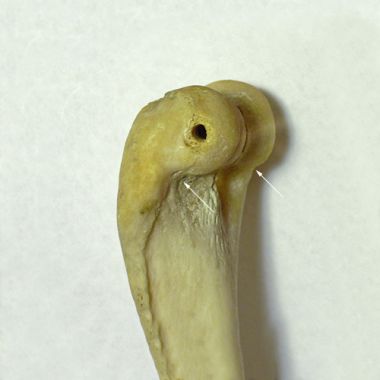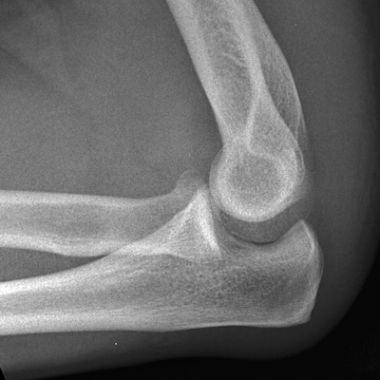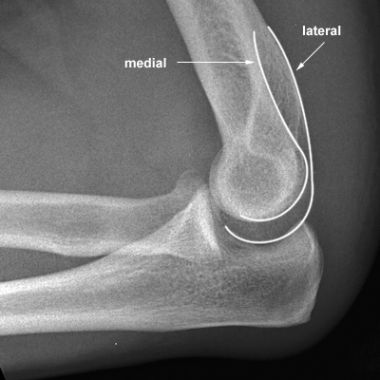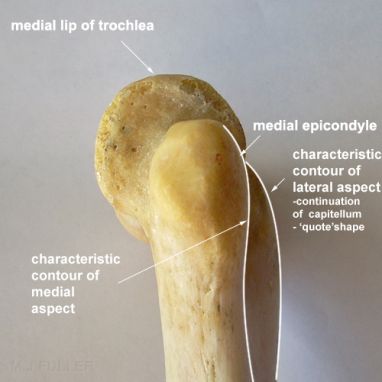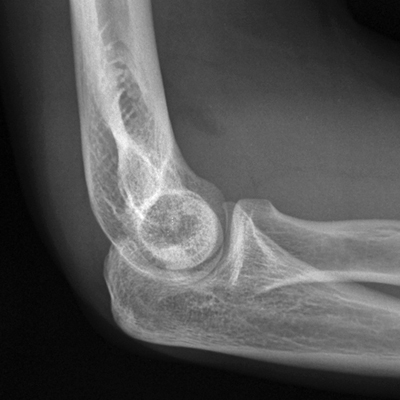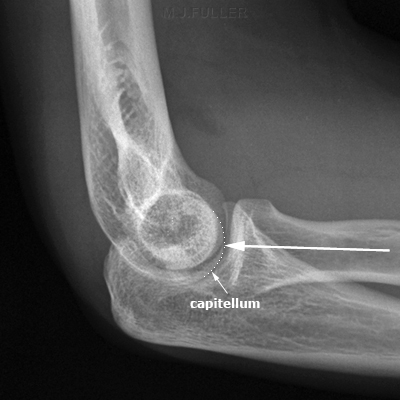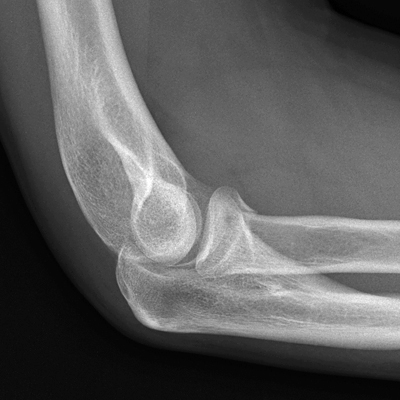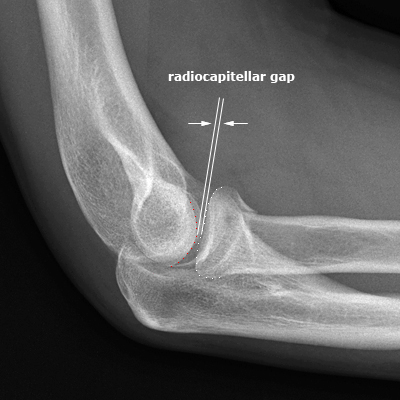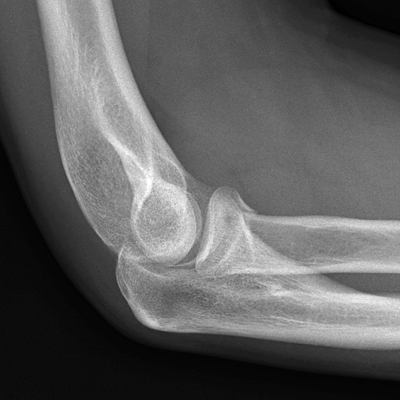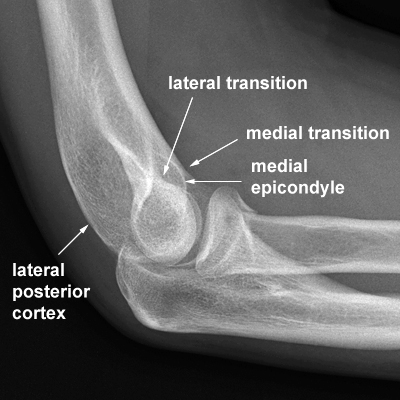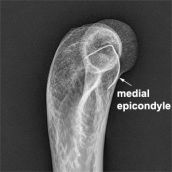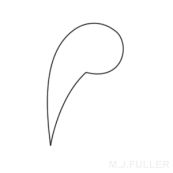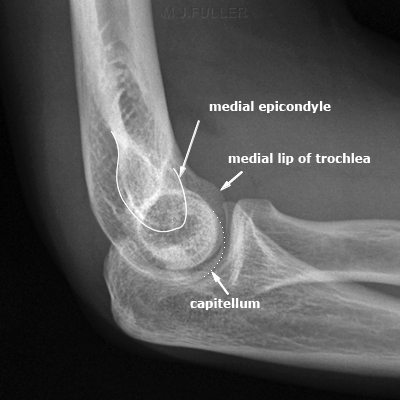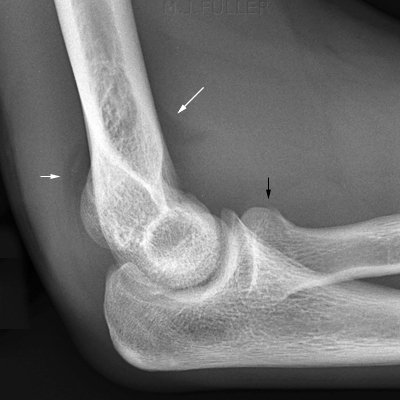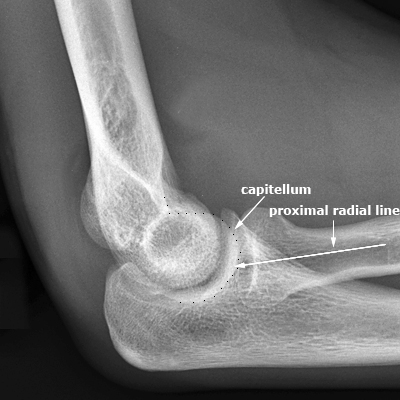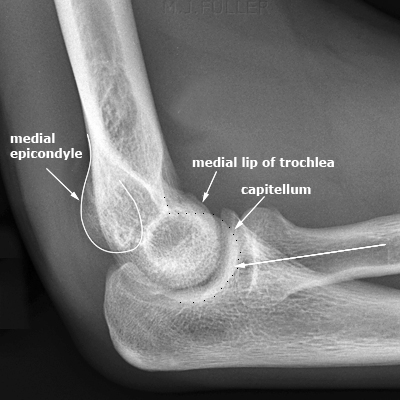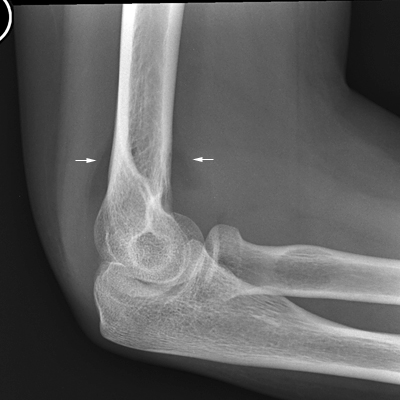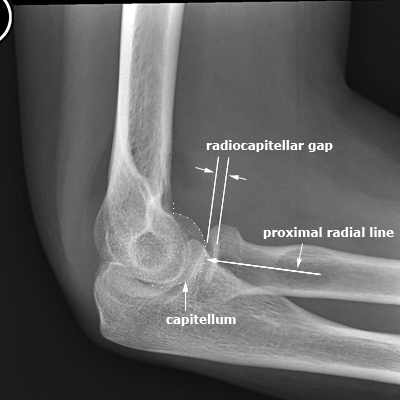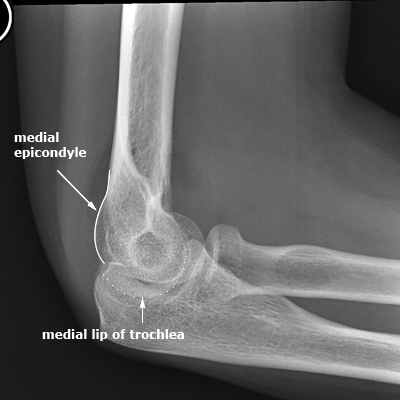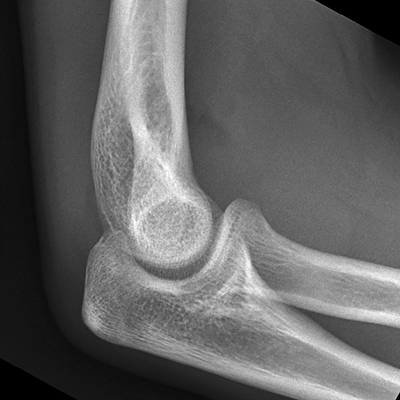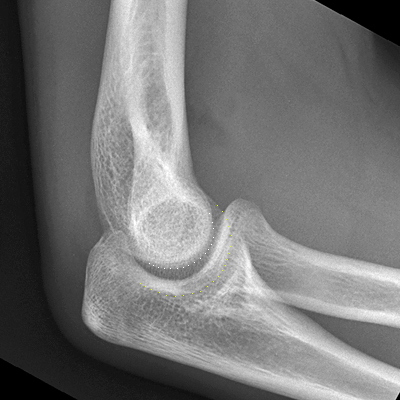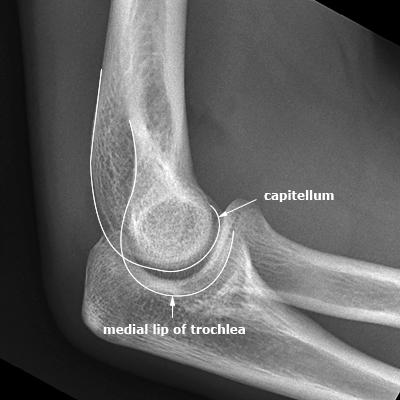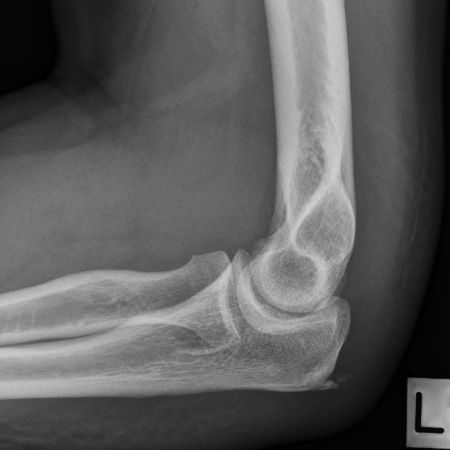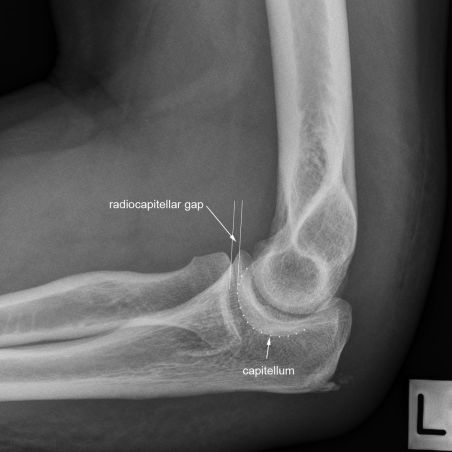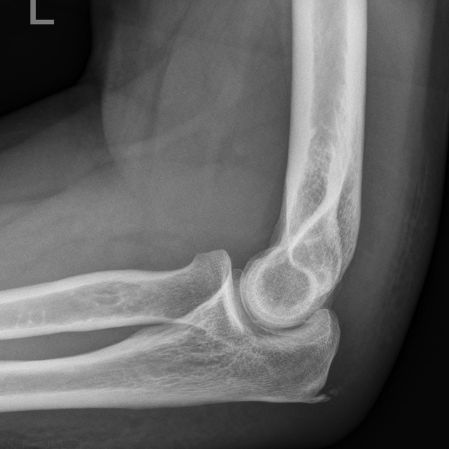The Lateral Elbow
The AnatomyThe lateral elbow is a troublesome radiographic position in terms of achieving a true lateral view. If you haven't achieved a true lateral view, understanding how to correct the position can also prove difficult. This page attempts to establish the anatomy that is displayed on the lateral view image and how to make position corrections when malposition occurs.
<embed allowfullscreen="true" height="350" src="http://wikifoundrytools.com/wiki/wikiradiography/widget/youtubevideo/723af899d4513a225691aff0242ff103110825d9" type="application/x-shockwave-flash" width="425" wmode="transparent"/> This is a video of the distal humeral X-ray anatomy in the lateral projection as the humerus is rotated through a limited arc from slightly externally rotated to slightly internally rotated.
Condyle, Epicondyle and Epicondylar Apophysis.
The distal humerus can be divided into two halves- the medial condyle and the lateral condyle in a manner analogous to the distal femur. "The articular portion of the medial condyle is the trochlea, and the articular portion of the lateral condyle is the capitellum. The epicondyle is considered part of the nonarticular portion of the condyle." <a class="external" href="http://emedicine.medscape.com/article/91780-overview" rel="nofollow" target="_blank">(Kelly, John D IV, e-medicine, Medial Condylar Fracture of the Elbow)</a> . The ossification centres of the medial and lateral epicondyles in a child are referred to as the unfused epicondylar apophysis.
Barium Coated Anatomy
What is the Characteristic Humeral Appearances of a True Lateral Elbow?
- the trochlear groove cortex is concentric with, and of a smaller diameter than, the capitellum and medial lip of the trochlea- three concentric circles.
- the medial epicondyle is slightly anterior rather than centrally located over the distal humerus
- the figure 8 or hourglass shape is not characteristically positioned
- the medial border of the distal humerus is approximately (but not perfectly) located in the middle of the distal humerus
- the posterior continuation of the capitellum is the most posterior cortex demonstrated.
- the appearance of the continuation of the medial lip of the trochlea (anteriorly) with the medial aspect of the coranoid fossa (as shown above) should not be considered a sign of malpositioning of the lateral elbow.
adapted from <a class="external" href="http://www.moplants.com/gallery2/v/Her+Country+Garden_001/poppy.jpg.html" rel="nofollow" target="_blank">http://www.moplants.com/gallery2/v/Her+Country+Garden_001/poppy.jpg.html</a>The medial epicondylar poppy! This photograph demonstrates the approximate position that the lateral view was taken in from a lateral perspective.
What are the Characteristic Humeral Appearances of a Malpositioned Lateral Elbow?
Too Externally Rotated Too Externally Rotated Bony Anatomy- lateral aspect When the elbow is too externally rotated, the capitellum (side away from IR) rotates posteriorly. In doing so, the medial condyle moves anteriorly revealing an apostrophe shape of the capitellum and posterior cortex of the distal humerus.
To correct this malposition, lower the patient's hand.Too Internally Rotated
adapted from <a class="external" href="http://www.math.utah.edu/%7Echerk/teach/elephant.GIF" rel="nofollow" target="_blank">http://www.math.utah.edu/~cherk/teach/elephant.GIF</a>Bony Anatomy- medial aspect When the elbow is too internally rotated, the capitellum moves anteriorly and the medial condyle moves posteriorly. The appearance of the medial condyle as it appears posteriorly is a characteristic 'bump' in the posterior contour of the distal humerus. This is dumbo's head (medial epicondyle) starting to emerge.
To correct this malposition, raise the patent's hand off the IRThis was photographed from the medial aspect (opposite aspect to all of the other images) which may be a little confusing!
The Anterior Transition Points
The Posterior Contours
The Proximal Radial Line as a Guide to Identifying the Capitellum.
The Radiocapitellar Gap as a Guide to Identifying the CapitellumUp until this point, evaluation of the lateral elbow position has not included consideration of the proximal ulna, and more importantly, the proximal radius. Radiographers commonly use the proximal radial line to differentiate the capitellum from the medial lip of the trochlea on the lateral image. This is an important differentiation when attempting to correct a malpositioned lateral elbow.
The radial head and the capitellum are covered in a layer of articular cartilage. These two articular cartilages tend to maintain a constant distance between the bony radial head articular margin and the bony capitellum. This radiocapitellar gap can be used as a guide to identification of the capitellum. This guide is particularly useful when the radial head is in true profile.
Testing The Theory
There will generally be two basic corrections for lateral elbow malposition
- raise hand/lower hand (external rotation/internal rotation of the humerus)
- raise/lower elbow (adduct/abduct humerus)
Case 1
Case 2
Case 3
Case 4
Case 5
Case 6
Comment
I was warned as a student that the lateral elbow position is the most difficult position in radiography. A knowledge of the elbow anatomy and the characteristic appearance of a malpositioned elbow will allow for a corrected position to be achieved. The usual cost-benefit balance should be considered before repeating a malpositioned lateral elbow view- just because you can achieve a corrected lateral elbow position doesn't mean that you should!
It is below a reasonable standard of care to repeat a malpositioned lateral elbow by randomly altering the elbow position and hoping for the best.
...back to the wikiradiography home page
...back to the Applied Radiography home page
